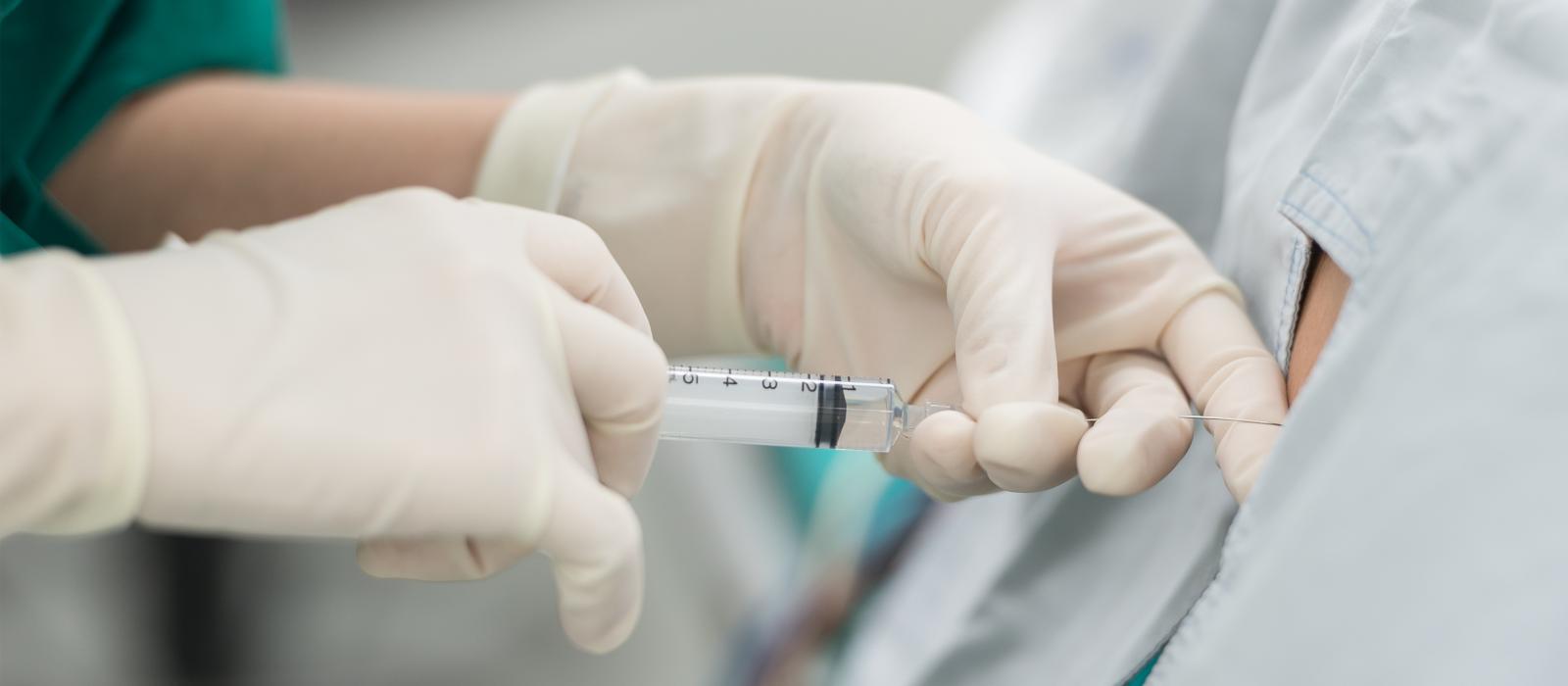Introduction
The coeliac plexus is the name given to a network of a number of nerves located in the upper abdomen. These nerves are 'sympathetic nerves', that is they control autonomous functions of the body – the nerves in the coeliac plexus are involved in the control of a number of organs, including the liver, stomach and pancreas. The coeliac plexus is more commonly known as the 'solar plexus'.
A coeliac plexus block is a procedure to treat pain arising from certain organs in the upper abdomen.
It is usually but not always reserved for pain associated with cancer.
Indications
Malignant pain affecting the upper abdomen.
Preoperative Instructions
Please also let us know ahead of the procedure if…
- You are taking any antibiotics.
- You are diabetic.
- You have a pacemaker or defibrillator.
- You are ill (in which case we may need to postpone the procedure).
You should also…
- Avoid undergoing any other medical procedures, such as for example dental treatment or a colonoscopy, within 48 hours (before or after) of a coeliac plexus block.
- Not drive yourself to or from the appointment (and you should not drive in the 24-hour period immediately after the procedure).
- Not have anything to eat or drink in the 6 hours prior to the procedure (you may take any normal medication on the morning of the procedure with a small sip of water) .
- Not smoke at all on the day of the procedure.
- Stop taking all blood thinning medication before the procedure (you may still take aspirin).
Procedure
An IV line is put in place in your arm or hand to administer anaesthetic. You will be unconscious for this procedure.
You are then asked to lie face down on a theatre table, with a pillow placed under the abdomen.
The injection site is then cleaned and numbed with a local anaesthetic, and a thin needle is inserted at the injection site and then guided by use of a mobile x-ray unit to the correct position.
Alcohol or phenol, or rarely, local anaesthetic, is then injected around the coeliac plexus.
Once the procedure is complete, you will need to spend around an hour under observation before being able to go home. As per the preoperative instructions above, you should not drive yourself to or from the appointment.
Postoperative Instructions
It is recommended that you take 48 hours off before returning to normal activities (including work). We will contact you within a day or two to check up on you and arrange a follow up appointment. You will be asked to complete a 24-hour pain diary.
In some cases, patients may experience diarrhoea for up to two weeks after the procedure.
Risks
A coeliac plexus block procedure is usually a low-risk procedure – however all medical treatment comes with some level of risk. Possible complications may include…
- Pain.
- Bleeding.
- Infection.
- Pain at injection site.
- Nerve damage.
- Low blood pressure.
- Temporary diarrhoea.
- Loss of sexual function.
- Damage to the spinal cord and very rarely paralysis.
- Allergic reaction to anaesthetic.
